Horse | Interview | 70s Occult Freakout: Lost in the Acid Fog
Horse came galloping out of the post-psychedelic haze in ’68, born from the twisted minds of high school buddies Rod Roach and Adrian Hawkins, who decided the world needed some serious sonic shaking.
Rod, a journeyman of the six-string, had already sliced through the local scene with a razor-sharp axe, even dabbling briefly with the otherworldly Andromeda. But Horse, man, that was a different beast altogether. By ’69, they’d wrangled a final lineup: Hawkins belting out raw power on vocals, Roach unleashing a fuzz-wah guitar assault that could make your brain vibrate, Colin Standring laying down a bass groove thick as molasses, and Ric Parnell (yeah, the same dude who later tapped out for Atomic Rooster and Spinal Tap) pounding the skins like a madman possessed. What they forged was a molten slab of early hard rock, proto-metal, whatever you wanna call it—just know it’s loud, it’s wild, and it’s got more guts than most bands could dream of. But like so many greats, Horse never got their due. RCA dropped the ball, and what could have been a sonic revolution fizzled out. Still, those who caught them live—supporting the likes of Deep Purple and Joe Cocker—knew they were witnessing something raw and real, the kind of music that leaves scorch marks on your soul.
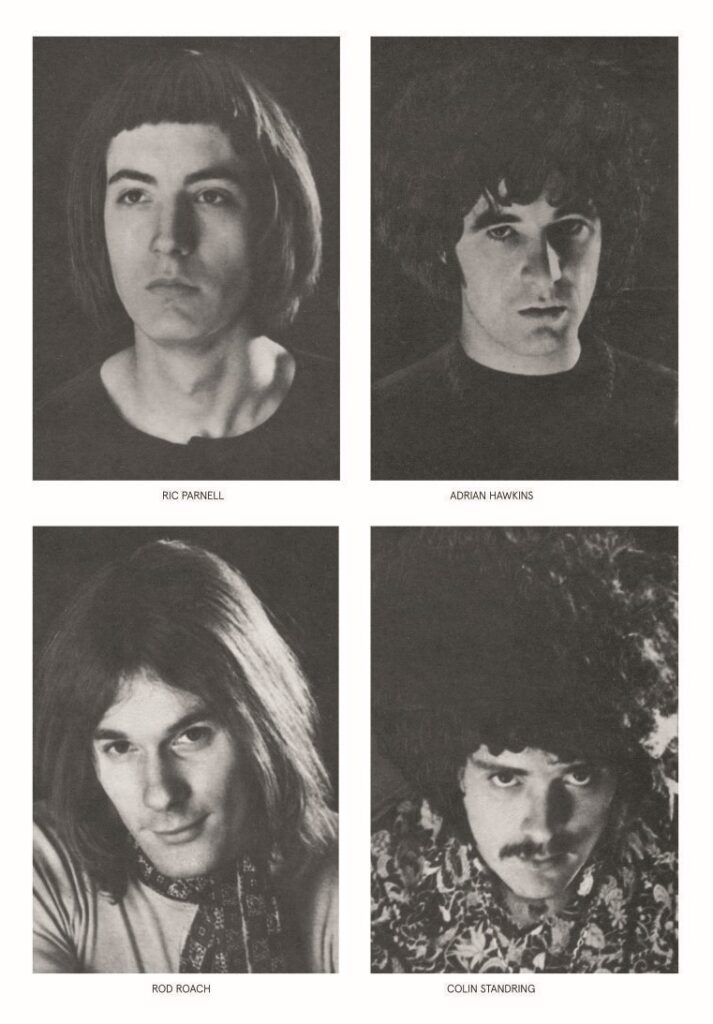
“We knew about the term “horse” as a kind of “under-the-radar” term for heroin and were wary of the connotation implied, but decided this might, in fact, add some mystique to what the band might be about.”
It’s great to have you. Are you excited about the Guerssen reissue of your 1970 album?
Adrian Hawkins: We wish Guerssen good luck and thank them for their belief in it.
Colin Standring: Glad to hear that some people are interested in the music we created over 50 years ago!
Rod Roach: Pleased and surprised. I hope it does well this time.
Hearing your old recordings today, what runs through your mind?
Adrian Hawkins: When I listen to our old recordings, I am reminded of the good times we had with the group—playing at gigs, recording the songs, and being with Rod, Colin, and Ric. Happy memories.
Colin Standring: It was a fun time. We had high hopes for the future!
Rod Roach: Talented musicians, great songs. They deserved more recognition at the time.
Would you like to share about your upbringing? Where did you all grow up? Tell us about daily life back in your teenage years.
Adrian Hawkins: I grew up in Weybridge, Surrey (close to London), and attended local schools. I met Rod Roach at senior school when we were both eleven years old. We were influenced by rock & roll and rhythm & blues music and found that we had that in common. He played lead guitar with a group at school, and a few times I sang along. My big inspiration was Gene Vincent—I knew all his records. Before that, I had a skiffle group at junior school doing Lonnie Donegan songs.
Skiffle was pretty much a mix of folk, country, and blues music, so you could say that these different genres may have impacted my musical development.
I was always interested in music, the arts, drama, and poetry, and after leaving school, I attended college until I was 17/18, when I left to accept a job at WEM (Watkins Electric Music). We made guitars, amplifiers, speaker cabinets, and big P.A. rigs for festivals. The Rolling Stones used WEM cabinets in the 1969 Hyde Park concert. We also made equipment used by Deep Purple, Status Quo, and many others. We also made a run of guitars for Vox, including the “Phantom” series.
Colin Standring: I grew up in Stevenage, Herts. We moved there from London in 1953 and stayed until the late ’60s.
Rod Roach: Grew up in Walton-on-Thames. Left school at age 14. Worked in a men’s tailor shop and played guitar. Early influence was Hank Marvin from the Shadows.
Was there a certain scene you were part of? Maybe you had some favorite hangout places? Did you attend a lot of gigs back then?
Adrian Hawkins: During the 1961-65 period, my friends and I used to go to the “Playhouse Theatre” in nearby Walton-on-Thames (where I had first met Rod at school). A promoter named Denis Corday held gigs there—he called it the “Saturday Nite Hop.” We saw many good up-and-coming groups there. I remember Neil Christian and The Crusaders with the 16-year-old Jimmy Page playing a black Les Paul Custom, and also The Tridents with a young Jeff Beck on guitar. There were also groups like The Paramounts, who later became Procul Harum, and a young Van Morrison with Them. The entry fee was 5 shillings then (or 25p as it is now!).
We would stand right at the front edge of the stage and check out what amps and guitars they used, as well as their techniques.
Further along the River Thames is Eel Pie Island, where jazz bands played and groups like “The Yardbirds” and “The Rolling Stones” appeared. Horse played there in later years. The Eel Pie club is gone now.
In Weybridge, there was an Italian-style coffee bar called “The Big Toe,” which was given a makeover and then resembled an American diner. My friends and I all had motorbikes and used it as a hangout—it was quite a wild place!
It had a huge jukebox, very loud and bass-heavy, with rock and blues belting out—The Kinks, Stones, Beatles, Beach Boys, Elmore James, Howlin’ Wolf, John Lee Hooker, that kind of music. During 1963-1966, I had a group with some guys who hung out there: two guitarists, a bass player, and a drummer, with me on lead vocals, harmonica, and percussive instruments. We were very popular at that time. The proprietor of “The Big Toe” was a big friendly guy called Pete, and he was into bluesy music. He put on a gig one Saturday night for us to play for free.
Colin Standring: The main go-to for gigs was the Locarno Ballroom on Wednesday nights. I saw many bands there, including The Hollies, Spencer Davis Group with Steve Winwood, Them with Van Morrison, The Move, Stevie Wonder, Zoot Money, The Barron Knights, Dave Dee and the Bostons (later Dave Dee, Dozy, Mick, and Titch), Bryan Poole and the Tremeloes, The Who, and of course, The Stones, and loads more… But The Beatles never played there.
Rod Roach: Same places and gigs as mentioned by Adrian, as we come from the same background. Also local halls and clubs, including jazz and blues venues such as the Cricketers in Chertsey and the Cellar in Kingston-upon-Thames. Saw John Mayall, Long John Baldry, Georgie Fame, and an early Small Faces with Steve Marriott.
Tell us about some of the very early bands you were part of before Horse.
Adrian Hawkins: Our group was called The Rhubarb Thrashers (we were amused by this!), and we stuck posters all around the town and had little badges made for our “fans.” The place was packed and very noisy. All was well until the police arrived in several cars, as we had intercepted all their communications through our P.A. We were forced to stop playing, and Pete was reprimanded. Shortly afterward, he sold up, and “The Big Toe” was finished. Happy memories of good times.
My next group was called The Electric Parade—guitar, bass, keyboards, girl singer, and me on drums and vocals (1966-68).
We mostly played standard types of songs, not really my kind of thing in those days, but gradually, we introduced more “rock,” and the girl and keyboardist left the group.
Colin Standring: Kit and the Saracens were a local rock band formed by pupils at Alleynes Grammar School. We were around 16. Originally, we played pop music influenced by Elvis, Cliff Richard, The Shadows, Buddy Holly, etc. Ken Hensley joined the band after about a year, and as he was a year older than us and more experienced, he quickly took over leadership and moved to play organ. We played local gigs and had a pretty big following. We moved on to more blues-influenced music and added two sax players. Kit was replaced by a local singer, Alan Greed, who had a great soul voice. The band became The Jimmy Brown Sound, playing mostly U.S. soul stuff, including James Brown, Otis Redding, Sam and Dave, etc.
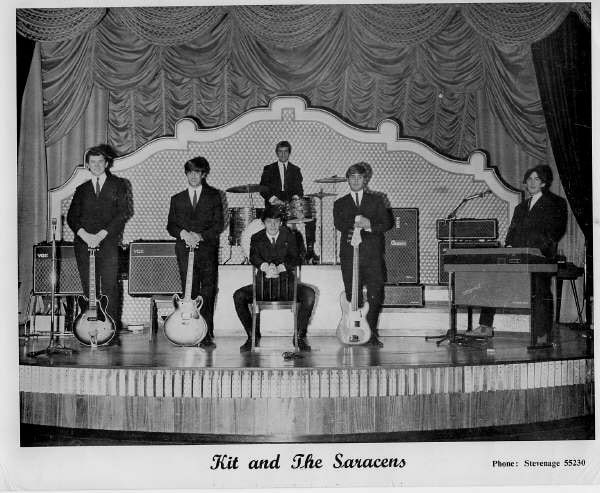
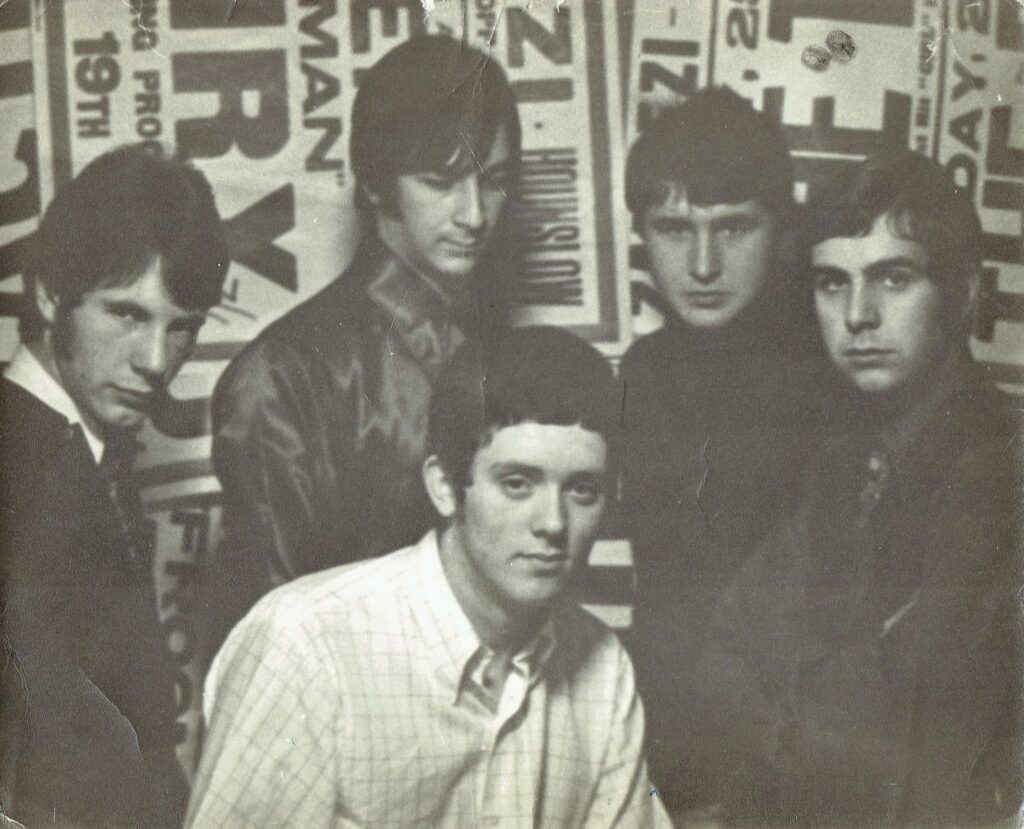
We “went professional” in 1965, i.e., traveled around in an old van doing gigs, mostly in the north of England. We never made any money; most of it went on equipment and expenses.
The big highlight for us was appearing as the opening band for The Who at Oxford Town Hall. Moon and Entwistle were very late for the gig after an appearance on London TV. The crowd was getting restless, and Pete Townshend asked me (bass) and Geoff Brown (drummer) to start the show with him and Roger Daltrey. We played a couple of numbers before Keith Moon and John Entwistle arrived and took over. Pete was very angry, and at the end of the show, he threw his guitar at Moon, who was out of his mind as usual. There was quite a fight in the dressing room afterward.
In 1967, Ken decided to leave the band to join The Gods (with Mick Taylor and Greg Lake) and later joined Uriah Heep. The two sax players left, and the remaining four of us accepted a month’s gig in a German nightclub near Frankfurt. The audiences were poor, and the club owner didn’t pay us. We went home to England penniless, the equipment was repossessed (it was all on hire purchase), and the band folded. Fun while it lasted!
Rod Roach: Played in a couple of bands at school, The Emeralds and The Missiles, then joined a local gigging band, The Echolettes, whose claim to fame was two appearances on the TV programme Ready, Steady, Win, an offshoot of Ready, Steady, Go. The Echolettes evolved into The Meaning with singer Carl King. We played home counties gigs, including Wimbledon Palais with The Pretty Things, The Troggs, and James Last. Mainly rock and pop covers with some original material.
In the late 60s, Carl King formed his own band, The Carl King Projection, for which I became the guitar player. We played gigs mainly in the north of England, including the Liverpool Cavern Club. The group was beset with equipment and health problems and broke up when Carl left to live in Denmark.
Then came London with Mick Hawksworth and Gerry Conway, but the band was short-lived.
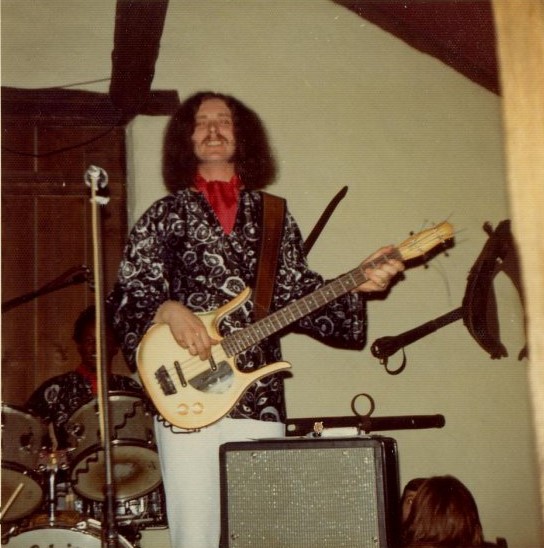
Can you elaborate on the formation of Horse?
Rod Roach: I had kept in touch with Adrian on and off since school and had great respect for his work. Somehow the time was right, and we started writing together. Adrian and Colin will tell you what happened next.
Adrian Hawkins: I had started having ideas for my own songs by this time but needed help to progress them, and that was when I met Rod again and we started work on the songs that eventually became the “Horse” music.
We then recruited Colin Standring on bass and Jess Lidyard on drums. Jess later played with Tubeway Army and was the drummer on the hit ‘Are Friends Electric,’ which I still think is a superb number.
We recorded some demos at Graham Clarke’s studio in Walton-on-Thames. Graham was a friend who understood us and our music ideas. Jess left the group in the summer of 1969. He was replaced by Ric Parnell, who Colin had played with and recommended. Good choice.
We then recorded more demos at Graham’s studio. We had all grown up hearing rock and roll, rhythm and blues, jazz, folk, country, and classical music, so our sound was influenced by all of this. As the amplification became more powerful, the sound became heavier, which probably led to the heavy rock genre with which we have been associated.
Colin Standring: After The Jimmy Brown Sound folded, I decided to apply to study at Surrey University in Guildford. I found an ad looking for a bassist for a band in Weybridge. Rod and Adrian were playing with a drummer named Jess Lidyard. I got on well with them and moved into a flat share in Weybridge. There, I met Ric Parnell and recognized that we got on rhythmically like I’d never experienced before. I recommended him to Rod and Adrian, and they accepted him into the band.
What influenced Horse’s sound?
Colin Standring: Adrian’s songwriting was very special, and Rod understood how to turn his ideas into songs. Ric and I were very much into Led Zeppelin!
Rod Roach: My background was in rock and blues, but the overall sound came from the combined input of each member of the band.
What kind of places did you play early on? What are some of the bands you shared stages with?
Adrian Hawkins: In the early days of Horse, we played the London club scene around Soho: The Marquee, The Temple, The Experience, Blaises Night Club, and “Upstairs” at Ronnie Scott’s Club.
Colin Standring: We didn’t play a lot of gigs, partly because RCA didn’t do much to promote the band. I remember playing somewhere in South Wales with Hawkwind (who I thought were awful!) and a great gig in Guildford supporting Deep Purple and Joe Cocker.
How did you get signed by RCA Victor?
Rod Roach: Through my musical association with Ian Grant, who worked at RCA.
Adrian Hawkins: Rod played our demos to Ian Grant at RCA. He was impressed and offered us a contract. At the same time, Chrysalis was interested in us, but we had doubts about them because they were a smaller company. However, Bob Grace at Chrysalis offered to manage us and give us a publishing contract, which we accepted. Bob got us some good gigs but gave up trying to be our manager, as we were unmanageable—that is, we didn’t like being told what to do and what not to do!
Following the first ‘Horse’ LP, RCA intended to record a second LP, but there was a disagreement with their new management, and we parted from them at the end of 1970.
Meanwhile, Ric had left the group, and we had recruited Steve Holly on drums and made a few more demos with him.
Steve later played with Elton John’s band and Paul McCartney’s “Wings.”
Colin Standring: Mostly Rod’s doing. He had a contact with a guy named Ian Grant who worked at RCA, and he negotiated a record deal.
Can you delve into the creative process behind this album? What were the inspirations and influences that shaped your sound?
Adrian Hawkins: All the demos can be heard on the 2016 reissue of the Horse album on Lee Dorrian’s Rise Above Records/Relics label, a double vinyl LP and CD with bonus tracks.
Colin Standring: Not much to add to this. We rehearsed in a hall in Weybridge regularly. Rod and Adrian would bring the ideas, and then Ric and I added our input.
Tell us about the instruments, gear, effects, etc., you had in the band.
Adrian Hawkins: At the time of making the record, Rod used a Fender Telecaster, Colin had a Hofner Violin Bass, and Ric used his father’s drum kit from the 1950s, which his father had played in his Jack Parnell’s Orchestra heyday.
I remember Colin’s Hofner bass was broken, and I think he replaced it with a Danelectro Longhorn.
We also used Marshall, Sound City, Selmer, Hi-Watt, and WEM equipment, and Shure mics.
Colin Standring: We were very much on a low budget, so didn’t have much more than a modest PA system with a combined amp and mixer. Rod used a lot of effects on his guitar. I remember he had a Watkins Copycat tape echo, which would might well be in a museum somewhere these days! I had a Hofner Violin bass which I had bought for 20 pounds after the Jimmy Brown Sound folded up. When were recording the album, the neck came off, and I bought a Danelectro Longhorn bass with some of the advance money!
Rod Roach: I played a Fender Telecaster with a Hi-Watt 4×12 amp and cabinet, a fuzzbox, and a WEM Copycat tape echo.
Would you share your insight on the album’s tracks?
‘The Sacrifice’
Adrian Hawkins: Based on a riff which Rod composed, Colin and Ric joined in when Rod started playing it in Olympic Studio, where the LP was recorded. George Chkiantz, the engineer, asked if I would sing something to help him with the recording levels.
The vocal was pretty spontaneous, not rehearsed. Some of the lyrics were from a poem I had been writing about making sacrifices to support a love relationship. There had been lots of TV coverage at that time about the war in Vietnam, with images of burning jungle, frightened animals, and children fleeing their blazing towns and villages, as well as Napalm death and destruction—nightmare scenes. I guess a lot of that was in my inner thoughts and manifested itself in a stream-of-consciousness outpouring. It wasn’t intended as a song, but everyone liked it, so we added a few extras, like the animal howl, to create more atmosphere, and it became the opening track.
‘See the People Creeping Round’
Adrian Hawkins: A song I’d been carrying in my head for some time—just a simple idea. Rod worked hard on it with me and added the riffs and middle eight, arranged the solo section, and then created that fantastic climax and explosive ending.
‘And I Have Loved You’
Adrian Hawkins: Rod said to me that it would be good to have a more gentle song among all the hard rock stuff. He came up with the chords, melody, and arrangement. My job was to try and find words to suit the mood of his song. So, apart from the lyrics, it’s all his work. Ric used the tympani percussion approach, and Colin played a lovely bass. We added backing vocals, and I think it’s a beautiful piece of work.
‘Freedom Rider’
Adrian Hawkins: We all knew about the Civil Rights Movement and the freedom riders on the bus but were wary of getting too overtly political. Honda Motorcycles were using the term “freedom rider” to advertise their latest bike, so I figured it would be a cool title for a song. I had a 12-string guitar at home and used it to create the chords and rhythmic feel and turned out lyrics to fit.
Rod arranged it and added all the riffs and solo parts.
‘Lost Control’
Adrian Hawkins: This came to me as a result of a breakup with a girlfriend. The lyrics, riff, and melody all arrived in my brain together as if by magic. I sang it to Rod, and he “polished” it and played that amazing solo where he really flies, with Colin and Ric driving it along and Rod’s terrific guitar work—it became one of my favorites on the LP.
‘To Greet the Sun’
Adrian Hawkins: Another simple idea in my head, which I sang to Rod. He developed it and added lots and lots of musical ideas and features.
It turned out pretty good!
‘The Journey’
Adrian Hawkins: One that Rod always sang. It sounds as if it may have been an old spiritual or gospel-type song. I don’t know where he got it from, but it was great to hear him do it “live”—very powerful and quite moving.
‘Heat of the Summer’
Adrian Hawkins: ‘Heat of the Summer’ and ‘Gypsy Queen’ both came to me about the same time as ‘To Greet the Sun.’
Rod worked on them and added lots of musical ideas, arrangements, solo parts, etc.
The early demo version of ‘Gypsy Queen’ was really fast, with an urgency to the guitar solo!
In the LP version, we slowed the tempo for the solo at Ric’s suggestion. Maybe he was short of energy at that session!
It became sort of slinky and sexy, rather than fiery and passionate.
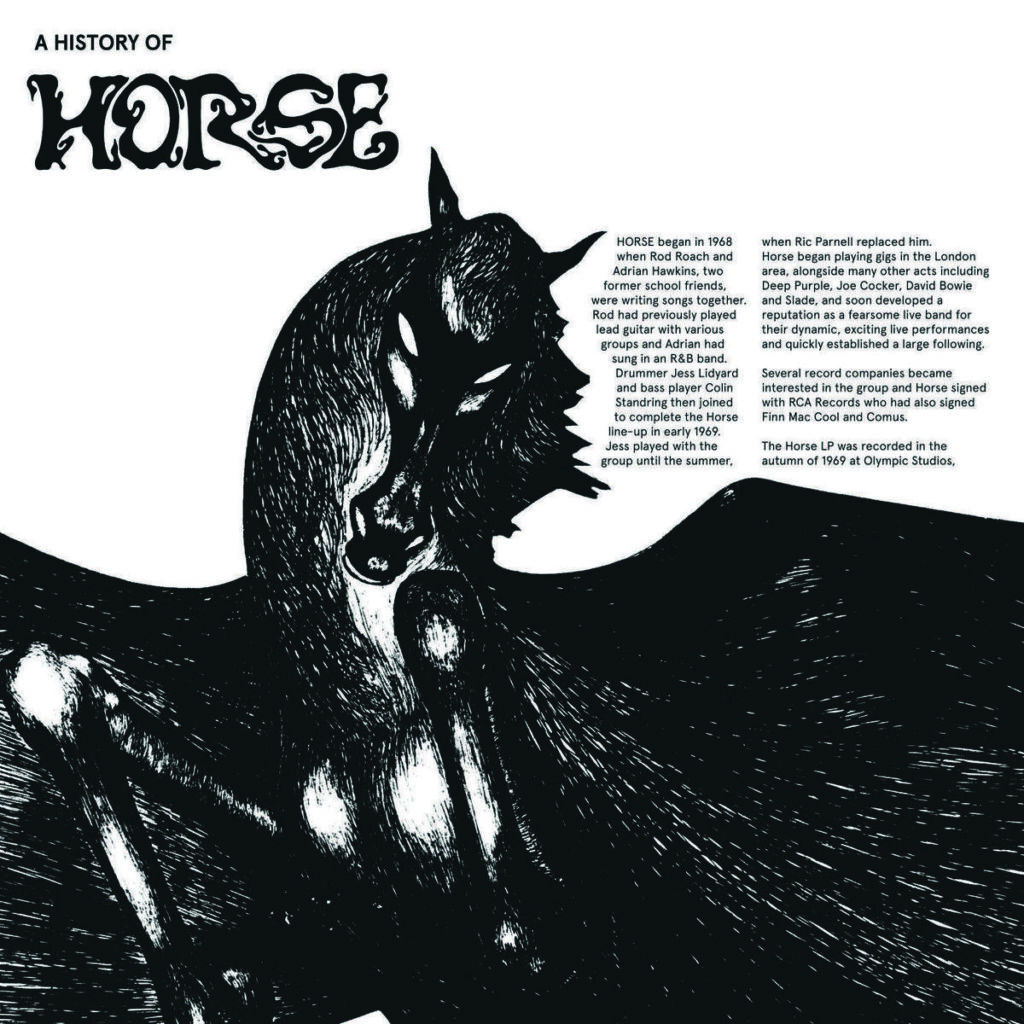
‘Gypsy Queen’ and ‘Step out of Line’
Adrian Hawkins: Another song which was sort of half-composed when I sang it to Rod. He worked it out with me and arranged it all.
I’d gotten all the lyrics completed and the verses structured but couldn’t get the chorus in place. Rod came up with the chorus part and the powerful riffs, and we had it finished.
Is there a story behind your band’s name?
Adrian Hawkins: We had a rehearsal room at the side of a local church in nearby Hersham.
The rehearsal room was also used as a kindergarten and had pictures of farm animals on the walls for children to learn from.
We had used the name “Collision” on one of our early gigs, but it didn’t seem right—too many consonants and vowels.
It looked rather “clumsy” in print, on posters for gigs and so on. We wanted something more precise. One of the pictures at the rehearsal space was of a horse staring at us. Rod said, “What about “HORSE” for the name of the band?” We all agreed to use it.
We knew about the term “horse” as a kind of “under-the-radar” term for heroin and were wary of the connotation implied, but decided this might, in fact, add some mystique to what the band might be about. The name stuck thereafter.
Colin Standring: As Adrian said, there was no sinister hidden meaning! There was a picture of a horse on the wall of our rehearsal room. Adrian used to count in by saying “one, two, three, HORSE!” which amused us. Hence the name of the band.
What are some of the most memorable gigs you played?
Adrian Hawkins: There was a UK tour of colleges and universities during 1970, plus gigs at Eel Pie Island and many music venue pubs. A proposed tour of the USA was canceled following our split from RCA, who were going to promote it.
We played some of the outdoor festivals that summer, with bands like Family, Status Quo, early Genesis, and other well-known bands, and did gigs with such as Deep Purple, David Bowie, Joe Cocker and the Grease Band, and Jackie Lomax’s Heavy Jelly, to name a few.
Colin Standring: I don’t remember many gigs, and definitely no airplay. As I recall, there wasn’t much support or promotion from RCA, which was a shame.
Rod Roach: All were memorable in their own way.
“They gave us absolutely no publicity or press”
Did the band tour to support the LP? Did you get any press or airplay back then?
Adrian Hawkins: The “Horse” LP was scheduled for release at the end of 1969 but was delayed by RCA until June 1970.
They gave us absolutely no publicity or press, not even a promotional “single” for radio play. We just had a half-page ad in Melody Maker for 2 editions and the same in Time Out magazine for 1 edition. This was instigated by Bob Grace and funded by Chrysalis Music.
Looking back, what was the highlight of your time in the band? Which songs are you most proud of? Where and when was your most memorable gig?
Colin Standring: Definitely supporting Deep Purple and Joe Cocker at Guildford Civic Hall.
Rod Roach: I am more than happy with all the songs that Adrian and I wrote. There are no favorites. I suppose the most memorable gig was at the Rainbow Theatre.
What occupied your life later on? Were you still in touch with other members? Is any member still involved with music?
Adrian Hawkins: At the end of 1970, Colin and Steve had effectively left the band because our future prospects seemed rather gloomy, having split from RCA.
As 1971 began, Rod and I were still writing songs and had enough material for the proposed second “Horse” LP. At this time, Ric Parnell contacted us as he was keen to rejoin. He had a bass player friend called Jim Mercer, and we began playing gigs again, still as “Horse.” It didn’t seem to work somehow, as by this time Rod and I had become so used to working with Colin and Steve.
Shortly after this, Rod was playing with a group with Tom Compton on drums. Tom had played in a group called Liberty with Richard Houghton on bass. We began rehearsing our songs with them and started gigging under the name of Tears of Joy, then recorded demos at R.G. Jones Studio, which I think was in Merton, near Wimbledon. Richard had written two of the songs, and Rod and I had one. This group became very popular and built a large following. This led to Mark Hanau and Matrix Records—and Aletta Lohmeyer joining us and then becoming “Saturnalia.”
There were a lot of songs that Rod and I had written and played with Colin and Steve in preparation for the next Horse LP in 1971. Some of these were used on the Saturnalia LP. Some were recorded as demos and were released on the Horse Rise Above Records/Relics double LP/CD, while others were played at our gigs but never recorded, which is a pity because there’s a lot of good stuff there that will probably never be available. There are some demos that may be included in the Rise Above future proposed Saturnalia LP reissue, subject to confirmation.
We have all remained good friends and have played live together occasionally. Rod and Colin stayed in music, as did Ric (R.I.P).
Steve Holly still plays drums with well-known acts, Jess Lidyard still plays drums (I believe) with Brock and the Badgers, Tom joined Johnny Winter’s band, and Richard plays bass with Dark Ages. I still enjoy writing… and keeping a low profile!
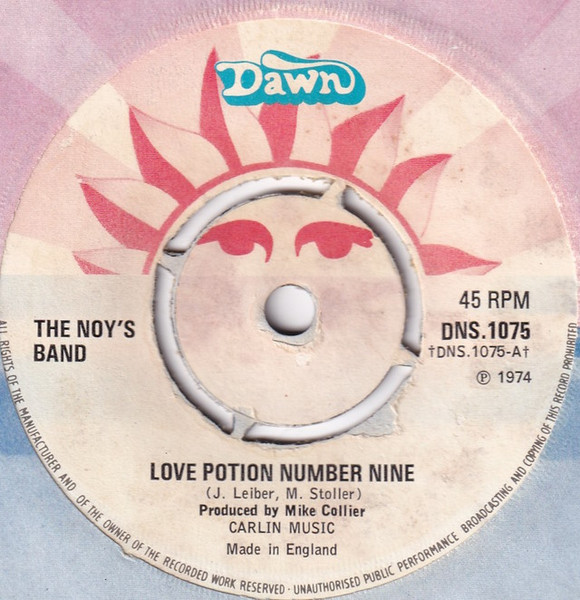
Colin Standring: After leaving Horse in 1971 (I think…), I moved to mainland Europe for a while, playing with nightclub bands in Germany, Austria, Holland, and France. It was a steady living, but I hated the music! I moved back to the UK after a couple of years, then tried to make a living playing pubs, sometimes with a 3-piece “pick-up” band that I would get together, sometimes in a duo or solo with just a guitar. I had a short stint with a London band called Noy’s Band for about a year. We made a single on the Dawn label in 1974, a very weird version of ‘Love Potion No. 9.’ It got one or two radio plays but didn’t succeed.
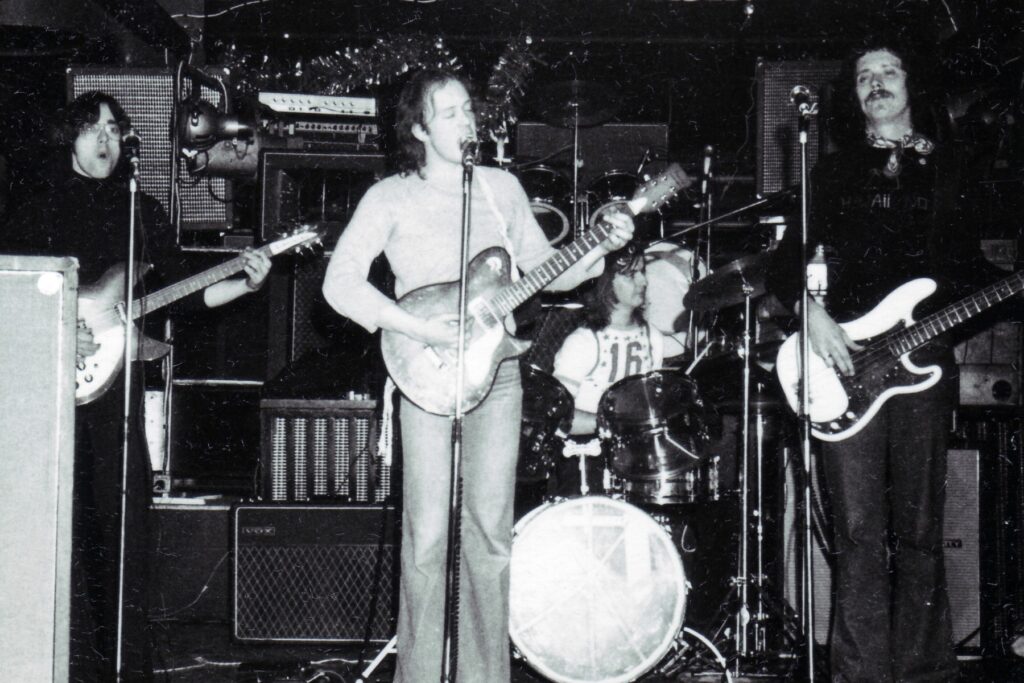
I moved to Munich, Germany, in 1975. I played with a few bands there and managed to play a few recording sessions. Nothing very successful. I joined a Dixieland jazz band, which played gigs around Germany. I moved to Zürich, Switzerland, in 1982 with my Swiss wife (we married in 1980) and son (born 1981) and managed to get a gig with a 10-piece band playing in a Zürich restaurant and nightclub 7 nights a week. I quit this job in 1984 when our second child was born. I decided to stay home as a “houseman” while my wife worked full-time. I started some part-time education, which led to serious study to qualify as an accountant, starting a pretty successful career in corporate accounting.
Music continued meanwhile. I played with some amateur jazz big bands, still on electric bass. The turning point came in 2000 when I discovered the double bass, which I wanted to play in the big band. I took some lessons and discovered classical music, which has remained my passion to this day. I’ve been lucky enough to play with some very good amateur symphony orchestras in some excellent concert halls. One big highlight was in 2009, when I played with the Nota Bene Symphony Orchestra on a project with the late Jon Lord, performing Deep Purple’s “Concerto for Group and Orchestra.” We played 2 sold-out concerts in Zürich and Luzern. It was magnificent!
I’ve always kept in contact with Adrian. We always got on really well, possibly because we share a birthday! (He is exactly one year older than me.) Ade and his wife visited us in Zürich some years ago. Back in 1996, we had a Horse reunion gig at a big party for Rod and Adrian’s 50th. That was fun! The last time I saw Rod was in 2014 when Adrian and I visited him at his place in southern France and stayed for a few days. I kept occasional contact with Ric Parnell via Facebook until he died in 2022. Very sad. He was a tremendous rock drummer and should have been a big star. Ok, so he was world-famous from Spinal Tap (which was very good typecasting—just like him in real life!) but he deserved better. I heard he was offered the gig with Journey but turned it down. He died penniless in Missoula, Montana.
Rod Roach: I played in a band called Charley Horse, formed with Tom Compton, Mick Hawksworth, and Steve Waller. Great music, but it wasn’t destined for success. For a while, Adrian and I formed a duo, playing pubs and clubs in and around London. From time to time, I played gigs with the Nashville Teens, touring in the UK, Germany, Hungary, and Denmark.
In between, I worked as a session guitarist on numerous projects, which led to becoming the guitarist for the American support band on one of Tina Turner’s UK tours. In the mid-70s, I met Tom Evans, the bass player from Badfinger. We became friends and started writing together. I had a brief association with Badfinger in Miami and have a writing credit on the “Say No More” album. After Tom’s death in 1983, I remixed the songs we had written and produced an album, “Over You,” in his memory. It was released in the early ’90s. Tom and I also played together with Tom Compton and Chris West, backing the Australian girl duo Cheetah on their UK tour.
After Tom’s death, I started recording from my own studio, mainly demos, until I met Paul Foss. Paul and I initially worked from my studio and later from his studio in Barnes. We composed, recorded, and produced music for advertising, music libraries, documentaries, and corporate and municipal events in the UK, Spain, and France. I also worked with Gus Dudgeon to remix certain tracks of Elton John, David Bowie, and Joan Armatrading. Sadly, he was killed in a road accident, and the tracks never saw the light of day.
My association with Paul ended in the late ’90s, and I retired to France in 2003. For a while, I played the odd local gig for fun, meeting musicians passing through, such as members of the group Mud, Hayo Stahl, a keyboard and sax player who runs a music studio in Cologne, and Stan Adler, an amazing American bass and electric cello player who had played with Arthur Brown.
I have kept in touch with Adrian, who has been a good friend, and have renewed contact with Colin since the revived interest in the Horse and Saturnalia albums. I lost contact with Ric, although he had been in touch just before he died. Tom Compton moved to the US and drummed for the Johnny Winter band for many years. He is now back in the UK, and we have kept in touch over the years.
Tell us more about Saturnalia.
Rod Roach: After Horse, Adrian and I joined Tom Compton (drums) and Richard Houghton (bass) in a band called Tears of Joy. Mark Hanau of Matrix Records, once the manager of the group Curved Air, was looking for a band to support his singer Aletta Lohmeyer. We joined forces, and the band Saturnalia was formed. The music was a mixture of our songs and those written by or for Aletta.
Adrian Hawkins: After Horse had disbanded, Rod and I joined with Richard Houghton and Tom Compton from Liberty.
We were called Tears of Joy and played lots of gigs during 1971-72. One night, we played at “Studio 51” in Great Newport Street, and Aletta Lohmeyer was also there, singing and playing acoustic guitar. She sang very well and looked great—colorful and “arty.”
Mark Hanau was with her as manager and chaperone. He introduced himself and Aletta to us and said he was going to record her singing her songs on his Matrix Records label. He mentioned that he knew of Rod and me because he had the ‘Horse’ LP in his record collection and that he would like to sign our group to Matrix as well. We knew that he had been successful with the group Curved Air, and we agreed to sign with him. Rod and Richard were both good singers, and we had used the Mamas & Papas song ‘California Dreamin’’ in our live set with three-part harmony. Mark suggested that we include Aletta to create a four-part harmony.
This worked well, and Aletta then joined us permanently, and Tears of Joy became Saturnalia.
Our popularity increased as we continued to play as a quintet, and in October 1972, we were ready to start recording. Mark suggested using Gus Dudgeon as producer, and he came to listen to us. He came across as rather arrogant and conceited, and Rod and I took a dislike to him and asked Mark to find us someone else.
This led to Keith Relf, who was very modest considering all the success he’d achieved with The Yardbirds, one of my favorite groups. He spent a lot of time with us, and we all got on very well together.
When the recording was finished in October 1972, we began a long UK tour to promote the LP, which was released in February 1973.
We played almost every university and college in the UK and all the top clubs and music venues until the tour ended in May 1973.
By this time, we were all pretty exhausted, including Gordon, our roadie—seven months without a day off. Aletta’s health was suffering, and she left the group.
We decided to find a keyboard player to replace her. Graham Bond came along and joined us, and we did some great gigs with him. But after a while, his ego became difficult to deal with. He tried to change the band, and I wasn’t happy about that—we were Saturnalia, not The Graham Bond Organisation. We were getting bad vibes. Richard left and started his own group.
Shortly after, I did the same thing. Rod and Tom stayed with Graham and brought in a replacement singer and bass guitarist, but nothing much happened.
Saturnalia was over.
A couple of years later, poor Keith Relf had died, and later Graham Bond killed himself. It was a sad time, and it felt like the end of a great era.
Rod and I later formed Landslide and carried on playing four or five nights a week in the London music pubs and clubs, having good times and lots of fun. I lost contact with many of those past musician friends but always remained close to Rod and Colin and their wives. You could say that Rod and Colin are my “soul brothers.” I love those guys!
Was the Matrix Records label made especially for Saturnalia albums?
Rod Roach: I don’t believe so.
Please share as much as you recall from working on ‘Magical Love.’
Rod Roach: The album was recorded at Island Studios in London and was produced by Keith Relf, singer of the Yardbirds.
Did Saturnalia play a lot of gigs?
I remember a UK tour ending in a gig at the Rainbow Theatre, London.
What followed?
Rod Roach: The Saturnalia 3D picture disc was the first of its kind. Many of the original albums suffered from poor sound quality, leading to lots of returns. As a result, the project got into financial difficulty. The band was forced to hand their equipment back to Matrix, and Saturnalia folded.
Is there any unreleased material by Horse or related projects?
Colin Standring: Not that I know of.
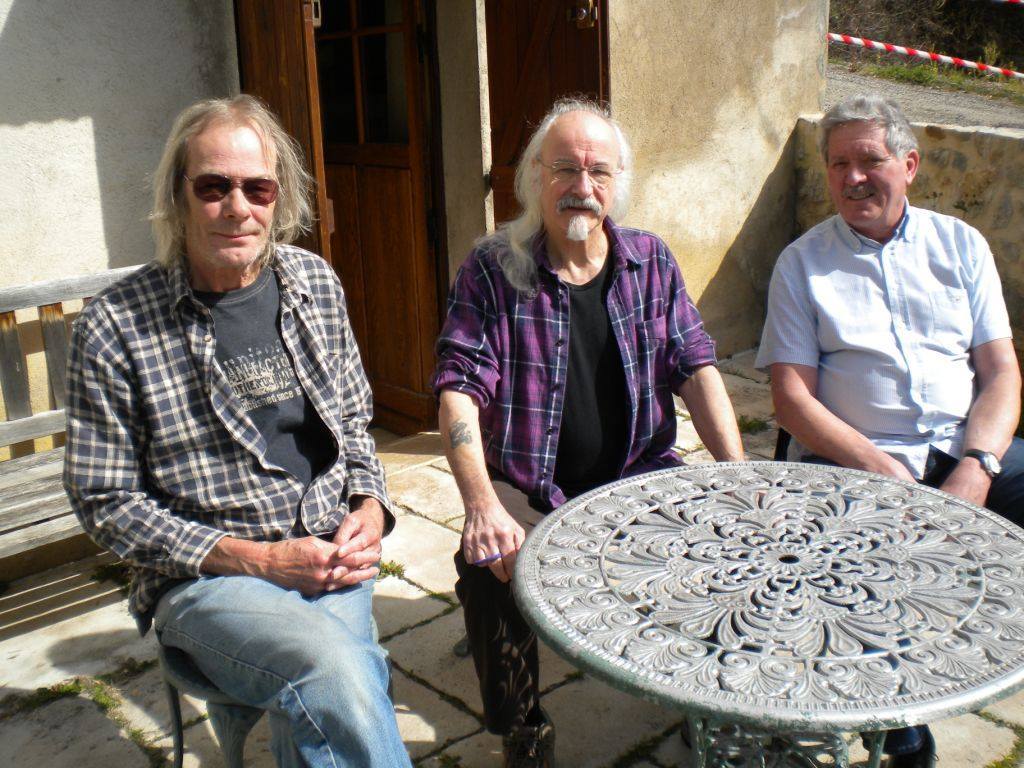
Thank you for taking your time. The last word is yours.
Colin Standring: Thanks. I’m glad to hear there are still people creeping around who are interested in our music!
Rod Roach: Thank you, Guerssen, for your interest in us. I have led an unconventional life, which has not always been easy. Along the way, I have met, played with, and been helped by some remarkable and talented people. I thank you all.
Klemen Breznikar
Guerssen Official Website / Facebook / Instagram / Twitter / Bandcamp / YouTube

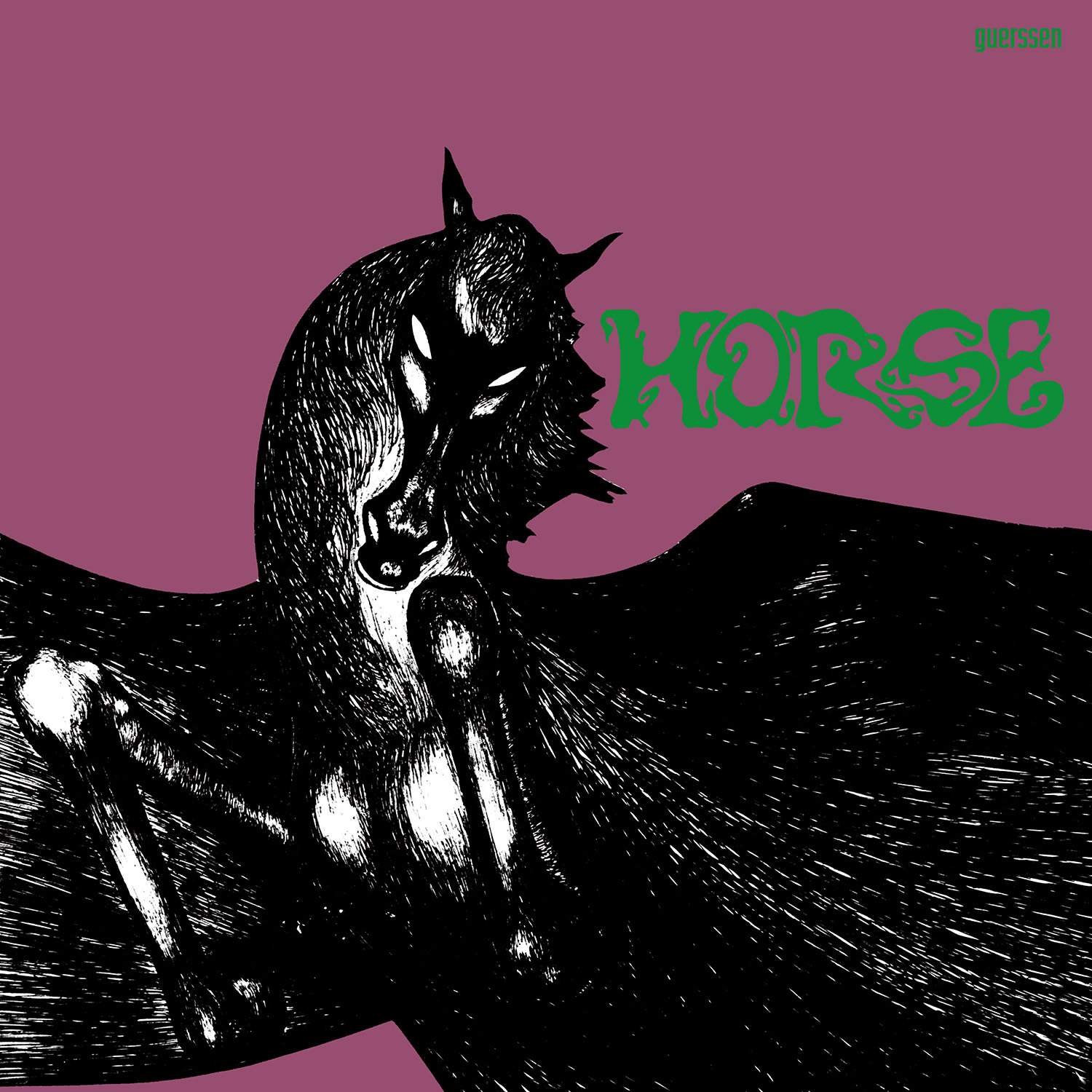



Wonderful memories!